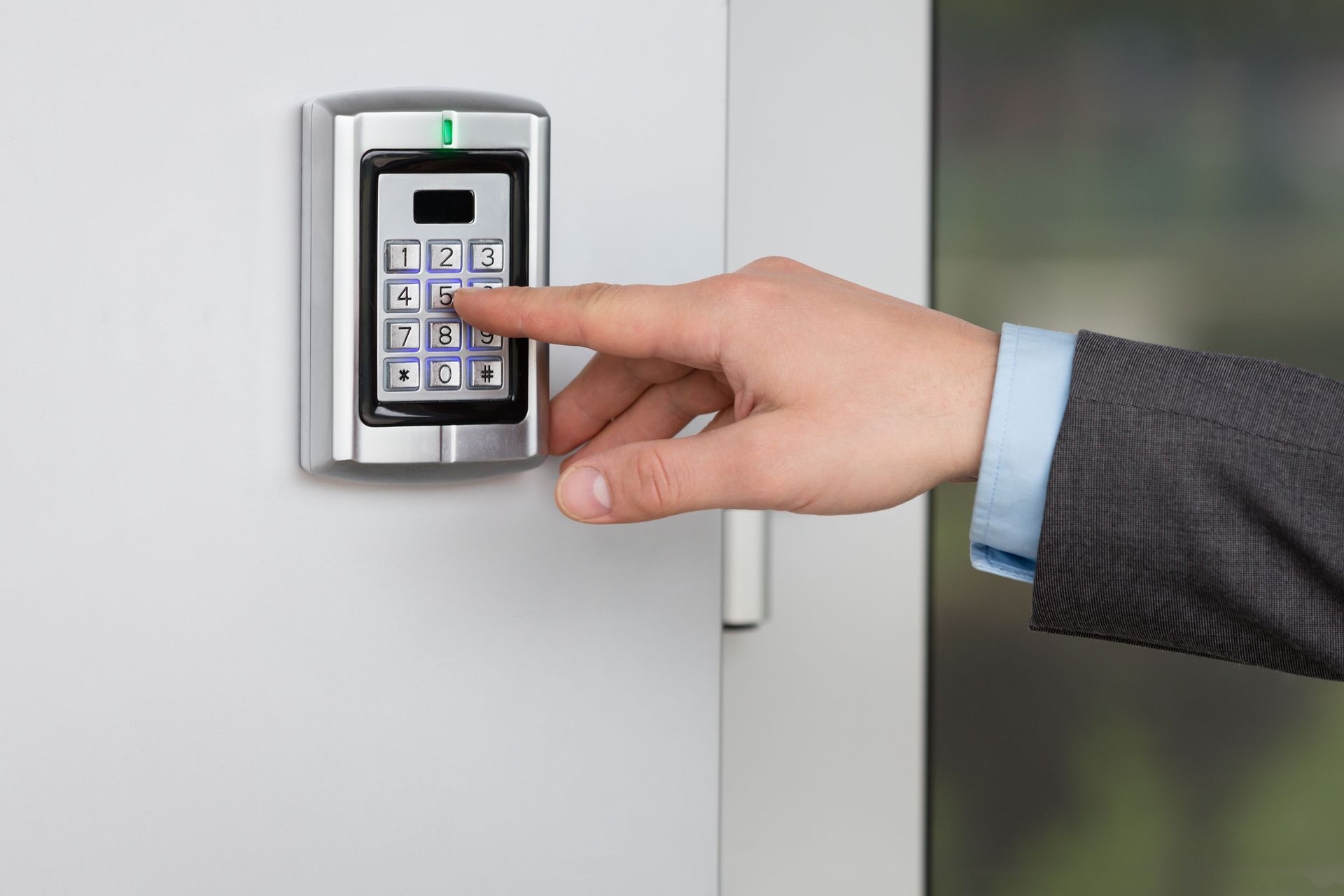September 23, 2025
In today’s world, protecting your home goes far beyond simply locking doors and windows. A home security system promises peace of mind, but the question remains: Are these systems truly effective in keeping you and your family safe? With technology advancing rapidly and threats becoming more sophisticated, it’s essential to evaluate whether your current system meets modern security standards. Many homeowners invest in a system expecting it to cover every possible risk, but understanding what your system does—and doesn’t do—is key to truly protecting your home.
Understanding the Foundations of Home Security
A reliable home security system is built on multiple layers of protection, designed to work together seamlessly. Most systems integrate sensors on doors and windows, motion detectors, and alarm alerts to create a comprehensive safety net. More advanced setups may include surveillance cameras, smart home integration, and remote monitoring through mobile apps. These features allow homeowners to check on their property in real time, even when they are away.
It’s also worth noting that a home security system is not a one-size-fits-all solution. Each system has its strengths and weaknesses, so understanding what your system includes ensures you are leveraging all its capabilities. For example, motion detectors can alert you to intruders, but their placement must be strategic to avoid blind spots. Similarly, cameras are useful for recording activity, but they only provide evidence if positioned correctly and maintained regularly. The foundation of a safe home starts with understanding these core components and how they interact to create a protective environment.
Additionally, homeowners should consider how their security system interacts with other aspects of home safety, such as lighting, landscaping, and neighborhood watch programs. Coordinating these elements enhances overall protection and ensures that the system functions as part of a broader, proactive approach to home security.
Evaluating Your Home’s Security Needs
Every home has unique vulnerabilities that influence the choice of security measures. A thorough assessment of your property can reveal areas that require additional protection. Consider factors such as entry points, visibility, and even landscaping elements that could provide cover for intruders. Understanding your neighborhood’s crime profile is equally important; areas prone to burglaries might benefit from more robust security features, while neighborhoods with lower crime rates may require less intensive measures.
Conducting a detailed evaluation allows you to identify where your home is most at risk and helps determine which components of a home security system are essential. For instance, homes with large windows or multiple access points may need extra sensors or additional surveillance coverage. Similarly, properties with detached garages, basements, or backyard structures may require specialized sensors or cameras.
According to Consumer Affairs, of the 107.9 million households in the U.S. that have internet access, about 28% of those households (approximately 30.2 million) pay for a security service. This statistic highlights that many homeowners recognize the value of professional security and are willing to invest in reliable protection, reflecting a growing awareness of the importance of comprehensive home safety.
Recognizing the True Benefits of a Security System
A home security system is more than just a visible deterrent. Its effectiveness can often be measured by reduced burglary risks, faster response times, and the ability to alert authorities immediately during a security event. However, not all systems provide the same level of protection. Systems that integrate monitoring services, real-time alerts, and comprehensive coverage typically outperform basic setups that rely solely on alarms.
It’s also important to separate perceived safety from actual security benefits. A flashy interface or expensive equipment doesn’t always translate to better protection. The real advantage comes from a system’s ability to respond accurately and quickly to threats while minimizing false alarms. Homeowners should focus on proven features and consider how they interact with their home’s layout and lifestyle to ensure maximum effectiveness.
For example, surveillance cameras that provide live streaming and cloud storage can be invaluable in both preventing incidents and providing evidence if a crime occurs. Meanwhile, integrated smart locks and motion-triggered lighting not only deter intruders but also provide peace of mind for families with children or elderly members.
Addressing Common Vulnerabilities
Even the most advanced home security systems have potential weak points. Windows, doors, garages, and even basements are frequent targets for intrusions. Many systems include sensors to monitor these areas, but gaps can appear if coverage is incomplete or improperly installed. Technology itself can also fail: connectivity issues, outdated software, or hardware malfunctions may compromise protection.
Regular maintenance and updates are essential for keeping a home security system reliable. Routine checks of sensors, alarms, and cameras, along with software updates, help prevent lapses in security. It’s also worth considering environmental factors, like power outages or severe weather, that may temporarily disable certain features. Addressing these vulnerabilities proactively ensures your system continues to serve its intended purpose effectively.
Additionally, homeowners should review user habits that may inadvertently create risks. For instance, leaving windows open when a system is armed, failing to activate alerts when leaving the house, or neglecting to replace batteries in wireless devices can reduce the system’s effectiveness. A holistic approach to security considers both technology and daily routines.
Enhancing Security Through Professional Integration
A home security system reaches its full potential when integrated with professional monitoring services and combined with other safety measures. Professional installation ensures proper alignment of cameras, sensors, and alarms, minimizing blind spots and improving response times. Experts also provide guidance on system optimization and troubleshooting, which is invaluable for long-term reliability.
Beyond technology, collaborating with neighborhood programs, local law enforcement initiatives, and community safety groups can further amplify the effectiveness of your security setup. By fostering community awareness, homeowners benefit from collective vigilance that complements their home security system.
Preparing for the Future of Home Protection
Home security requires ongoing attention and adaptation to changing circumstances. As your household evolves—whether through renovations, landscaping changes, or the addition of family members—your security needs may shift as well. Regularly reassessing your home’s vulnerabilities and updating your security measures ensures continued protection.
Routine maintenance of your home security system, such as checking sensors, alarms, and cameras, is essential to ensure everything functions correctly. Homeowners should also consider adjustments based on seasonal changes, neighborhood developments, or new entry points that may create potential risks.
Planning for the future also includes staying informed about best practices in home protection. This might involve consulting professionals, reviewing local crime trends, or participating in community safety initiatives. By taking a proactive and consistent approach, homeowners can maintain a safe and secure environment that protects both property and family, ensuring peace of mind for years to come.
Building a Safe and Confident Home Environment
Ultimately, a home security system is most effective when it is part of a comprehensive safety strategy. This includes professional installation, regular updates, strategic placement of sensors and cameras, and community engagement. By understanding your unique needs, addressing vulnerabilities, and staying ahead of technological advancements, you can maximize the protection and peace of mind your system provides.
Safety is not a one-time investment but an ongoing process. Staying informed about security trends, maintaining equipment, and continuously evaluating your home’s vulnerabilities ensures that your home remains well-protected. A thoughtful approach to home security allows you to enjoy the comfort and confidence of knowing your family and possessions are safeguarded.
In addition to technology, fostering awareness and preparedness among family members is vital. Teaching children about emergency procedures, ensuring adults know how to respond to alerts, and regularly reviewing safety plans ensures that the home is protected from multiple angles. Combining these measures with a well-maintained home security system creates a truly safe environment. Take the first step toward a secure home and ensure your home security system delivers real protection—contact Priceless Security today.



